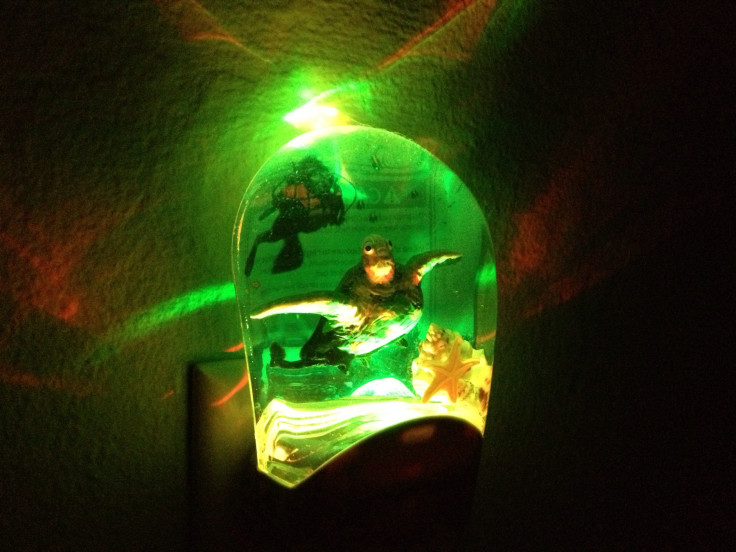The Color Of Your Nighttime Light Could Cause Symptoms Of Depression

Whether it’s because they are afraid of the dark or just because they need to navigate their way to the bathroom at night, many children still use night lights. If any thought goes into what kind of night light it is, chances are no one is thinking about the effects of the light’s color, but new research suggests that this one factor could make all the difference.
In a study involving hamsters, researchers looked at the effect of different colored lights on the mammalian intrinsically photosensitive retinal ganglion cells (ipRGC), which are located in the retina, but play little part in vision, and instead signal changes in ambient light to the brain, therefore playing a major role in a person’s circadian rhythm.
"These cells are most sensitive to blue wavelengths and least sensitive to red wavelengths," Randy Nelson, professor of neuroscience and psychology at Ohio State University and co-author of the study, said in a statement. "We wanted to see how exposure to these different color wavelengths affected the hamsters."
Previous research had found that ipRGCs might also send signals to the brain that affected mood and emotion. Specifically, white light, which is typically emitted from light bulbs, has been linked to depression in some people.
Adult female hamsters were exposed to different nighttime lighting conditions for four weeks. Some of them received no light, while others received dim red light, dim white light, or dim blue light. At the end of the experiment, the hamsters were treated to sugar water, a drink that they usually enjoy. But only the hamsters that weren’t exposed to nighttime light during the four weeks drank a lot. Those mice exposed to red light drank sugar water too, albeit a little less, and those exposed to white or blue light drank a significantly smaller amount.
Read More: Turn Off The Light: Electric Light Disturbs Natural Sleep Patterns
The researchers tested the mice for depressive symptoms. Drinking less-than-normal amounts of water was considered among other evidence to be a sign of a mood problem.
Examinations of the hippocampal regions of the hamsters’ brains showed that those exposed to white or blue light had a smaller concentration of dendritic spines compared to those that were exposed to red light. These spines help transmit signals between neurons, and their density may reflect overall mental agility. Because of this, lower densities of spines have been linked to depression, Nelson said.
“In nearly every measure we had, hamsters exposed to blue light were the worst off, followed by those exposed to white light,” he said in the statement. “While total darkness was best, red light was not nearly as bad as the other wavelengths we studied.”
Cell Phones May Have The Same Effect
Just because the study involved hamsters, doesn’t mean it should be discounted so quickly. Light, in general, has been associated with lost sleep, depressive behavior, and poor glycemic control, which can lead to diabetes. For children, whose brains are still developing, and for whom concentration in school is of the utmost importance, loss of sleep could be very damaging.
Researchers recently found that using phones, tablets, and other portable electronics could make people more likely to have problems sleeping. As more people stay awake into the night by spending time on these devices, the light emitted plays with their circadian rhythms, and as a result, the body produces less melatonin — a hormone that helps regulate sleep.
In fact, the researchers also found that blue light was also the most detrimental, and noted that it’s the light most often used in back-lit devices.
“The adverse effects of night-time light on sleep and circadian rhythms can be reduced by replacing blue-enriched light with red- or orange-enriched light after sunset,” Dr. Charles Czeisler, professor of sleep medicine at Harvard Medical School, wrote in an editorial appearing in the journal Nature.
Source: Bedrosian T, Vaughn C, Nelson R, et al. Nocturnal Light Exposure Impairs Affective Responses in a Wavelength-Dependent Manner. The Journal of Neuroscience. 2013.



























